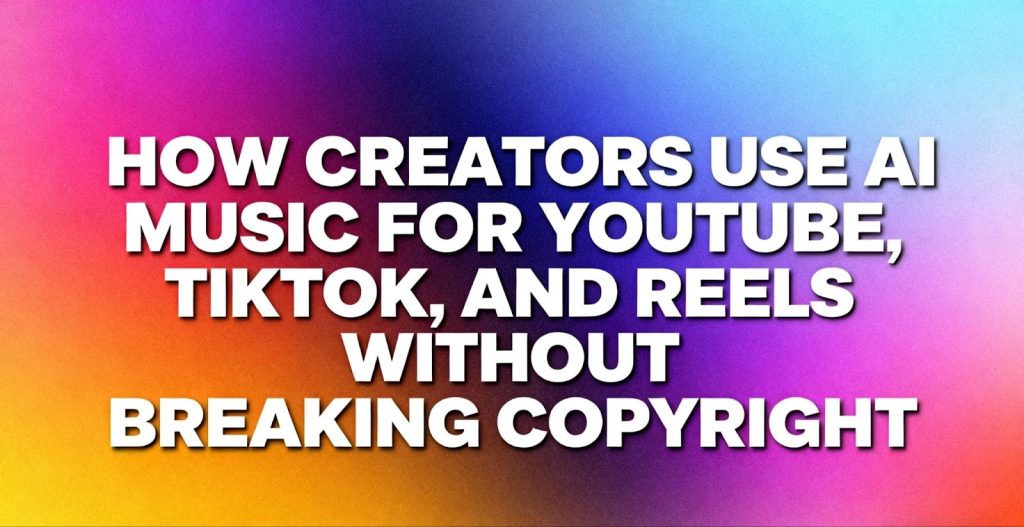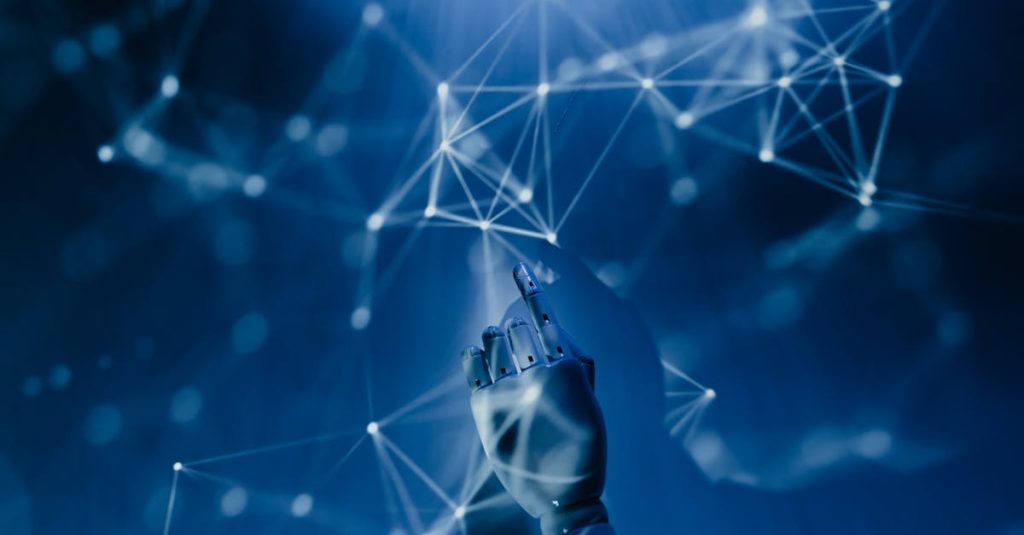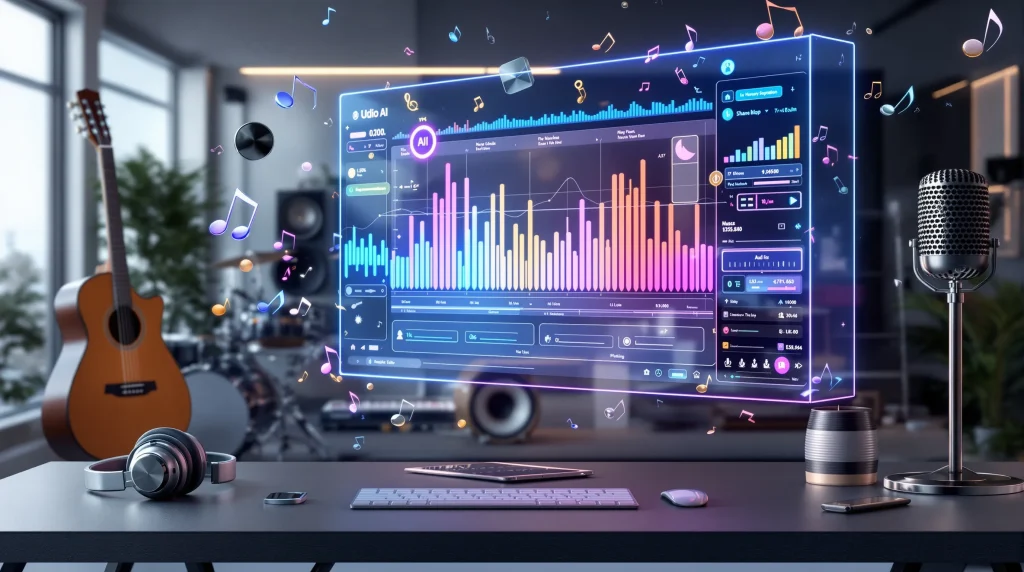I creatori di contenuti devono affrontare una media di 1,3 richieste di risarcimento per copyright al mese quando utilizzano brani popolari senza una licenza adeguata. Sfruttando la musica AI royalty-free, i creatori possono evitare gli attacchi, monetizzare i contenuti e creare colonne sonore uniche. Questo articolo spiega come le composizioni generate dall'intelligenza artificiale proteggono dalle violazioni e le best practice specifiche per le piattaforme YouTube, TikTok e Instagram Reels, La piattaforma musicale AI di Mureka caratteristiche, le tendenze legali emergenti per il 2025, le strategie di monetizzazione e le domande d'uso più comuni, il tutto progettato per dare a musicisti, videografi e hobbisti soluzioni sicure per il copyright.
Cos'è la musica AI royalty-free e come protegge i creatori dai problemi di copyright?
La musica AI esente da royalty si riferisce a brani generati da modelli di apprendimento automatico che i creatori possono utilizzare senza dover pagare spese continue o problemi di licenza. Producendo composizioni del tutto originali, i generatori di musica AI eliminano il rischio di richieste di Content ID e di avvisi di violazione. Ad esempio, un input da prompt di testo come “upbeat indie groove” produce uno strumento unico che non richiede royalties o attribuzioni successive.
In sostanza, la musica AI royalty-free previene le appropriazioni impreviste e consente il pieno controllo creativo. Quando un creatore scarica un brano, ottiene una licenza commerciale unica che copre l'utilizzo su qualsiasi canale. Questa certezza consente ai produttori di concentrarsi sulla narrazione e sul coinvolgimento, anziché sulle ambiguità legali.
Per chiarire come i brani generati dall'IA si inseriscono nel quadro delle licenze, si considerino le seguenti distinzioni:
- Fonte - La musica tradizionale è legata a compositori umani e a registrazioni preesistenti, mentre le composizioni dell'IA sono prodotte algoritmicamente su richiesta.
- Diritti - I brani AI royalty-free sono dotati di licenze commerciali esplicite, a differenza di molte librerie di stock che richiedono ulteriori autorizzazioni.
- Flessibilità - I creatori possono personalizzare l'atmosfera, il tempo e la strumentazione senza dover negoziare con i titolari dei diritti.
Ogni punto sottolinea come le colonne sonore guidate dall'IA snelliscano la conformità e promuovano l'innovazione senza implicazioni legali.
Proteggere la creatività umana nella musica generata dall'intelligenza artificiale attraverso licenze efficaci
I contenuti creati dall'uomo, come musica, testo, immagini e video, costituiscono la spina dorsale dei sistemi di IA generativa. Tuttavia, le opere generate dall'IA che ne derivano sono in diretta concorrenza con le creazioni originali. Questa dinamica presenta sia nuove opportunità che sfide per le industrie creative, in particolare nel settore musicale. Un mercato equo, etico e sostenibile per l'IA generativa dipende da un quadro giuridico solido che sostenga i creatori umani e protegga efficacemente i loro diritti di proprietà intellettuale. Per allineare gli interessi dei fornitori di servizi di IA e dei creatori di musica, è essenziale un nuovo quadro di licenze che garantisca un accesso equo e la protezione dei creatori originali.
Proteggere la creatività umana nella musica generata dall'intelligenza artificiale attraverso un'efficace concessione di licenze, S Jacques, 2024
Cosa definisce la musica AI royalty-free per i creatori di contenuti?
La musica AI royalty-free è definita da tre attributi fondamentali: creazione originale, licenza unica e utilizzo illimitato attraverso i canali. Creazione originale significa che nessun campione preesistente innesca l'ID del contenuto; la licenza unica garantisce diritti perpetui e l'uso illimitato copre video commerciali, annunci e flussi. Insieme, questi attributi tutelano i creatori dalle controversie sul copyright e consentono una distribuzione senza soluzione di continuità delle colonne sonore composte dall'intelligenza artificiale.
In cosa si differenzia la musica generata dall'intelligenza artificiale dalla musica tradizionale protetta da copyright?
La musica generata dall'intelligenza artificiale si distingue per la sua origine algoritmica e per la mancanza di materiale di origine umana. La musica tradizionale coperta da copyright coinvolge più detentori di diritti - compositori, parolieri, esecutori - ognuno dei quali richiede un'autorizzazione. Al contrario, i modelli di intelligenza artificiale sintetizzano nuove melodie e arrangiamenti sulla base di modelli appresi, producendo brani senza rivendicazioni di diritti sottostanti. Questa differenza fondamentale impedisce le corrispondenze di Content ID e semplifica la conformità legale.
Perché le licenze commerciali sono essenziali per monetizzare la musica AI?
Licenze commerciali trasformare le composizioni di IA da esperimenti creativi in risorse che generano profitti. Senza una licenza adeguata, un brano considerato esente da diritti d'autore potrebbe comunque incorrere nel takedown secondo le politiche della piattaforma che richiedono diritti d'uso documentati. Una licenza commerciale fornisce un'autorizzazione scritta per annunci pubblicitari, sponsorizzazioni e ricavi finanziati dagli abbonati, assicurando che ogni visualizzazione e flusso contribuisca al profitto del creatore.
Come si può utilizzare la musica AI su YouTube senza incorrere in sanzioni per il copyright?
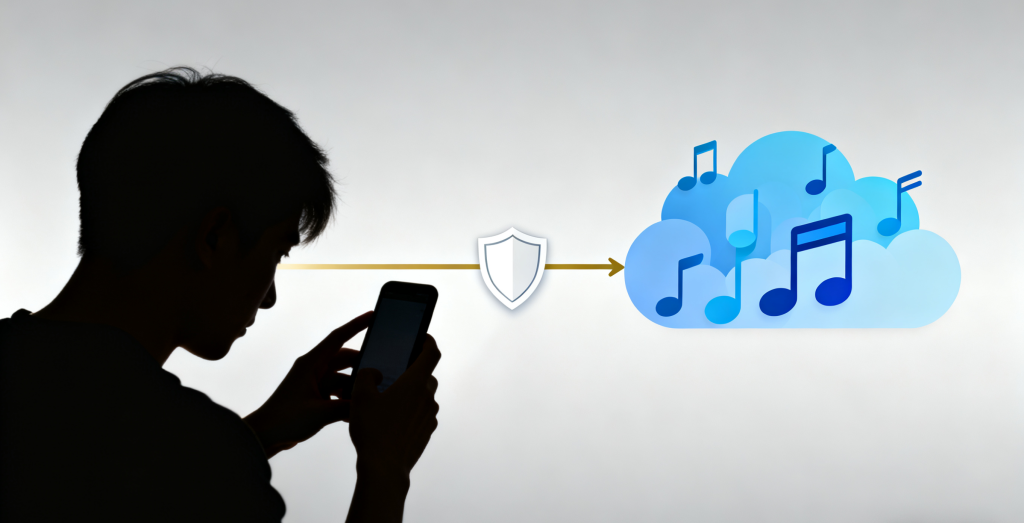
Sì, YouTube consente la musica generata dall'intelligenza artificiale quando i creatori detengono i diritti commerciali. Le Politiche musicali e il sistema di identificazione dei contenuti di YouTube trattano le composizioni AI in modo simile alle librerie di musica di repertorio, a condizione che il proprietario possa verificare la licenza. I canali che caricano brani AI con licenze nei metadati evitano gli attacchi automatici e mantengono l'idoneità alla monetizzazione.
L'inserimento di musica di sottofondo sicura dal punto di vista del copyright nei video richiede tre passaggi: generare un brano con atmosfera e durata definite, scaricare il certificato di licenza e includere i dettagli della licenza nella descrizione del video. Questo flusso di lavoro garantisce che qualsiasi scansione del Content ID non trovi diritti in conflitto, evitando notifiche di copyright.
I creatori possono anche incrementare le entrate pubblicitarie abbinando le colonne sonore dell'intelligenza artificiale a contenuti ad alta ritenzione, poiché l'audio unico mantiene gli spettatori impegnati senza muting o takedown.
- Definite lo stile e la durata della musica di sottofondo in un prompt.
- Recuperare il certificato di licenza al momento della generazione.
- Inserire i dettagli della licenza nei metadati del video per soddisfare i requisiti della piattaforma.
Seguendo questi passaggi si preserva la monetizzazione e si proteggono i creatori da sgradite segnalazioni di copyright.
Qual è la politica di YouTube sulla musica generata dall'intelligenza artificiale e sul copyright?
La politica di YouTube tratta i contenuti generati dall'IA in base alle norme standard sul diritto d'autore: l'originalità e la licenza sono fondamentali. I brani puramente creati dall'intelligenza artificiale con diritti commerciali documentati non vengono confrontati con l'ID contenuto, mentre i brani dell'intelligenza artificiale basati su input protetti dal diritto d'autore possono comunque far scattare le richieste di risarcimento. I creatori devono assicurarsi che il loro modello di IA non riproduca melodie o campioni protetti.
Come generare musica di sottofondo priva di copyright per i video di YouTube?
I creatori iniziano selezionando genere, il tempo e la strumentazione in un'interfaccia generatore di IA. Un'unica richiesta di testo, come “chill electronic loop-90 BPM”, produce una traccia loopabile. Dopo averla perfezionata attraverso richieste iterative o upload di riferimenti stilistici, il download finale viene fornito con un certificato di licenza commerciale royalty-free. Questo processo end-to-end elimina ogni incertezza sulla violazione e prepara il brano per la pubblicazione immediata.
Quali sono le strategie efficaci per monetizzare i video di YouTube utilizzando l'AI Music?
- Intro e outro brandizzati - Utilizzate jingle AI personalizzati per rafforzare l'identità del marchio e la lettura degli annunci senza costi di licenza.
- Brani esclusivi per gli abbonati - Offrire remix generati dall'IA come download per i membri del canale, aumentando il valore dell'iscrizione.
- Paesaggi sonori adatti alla pubblicità - Creare temi d'atmosfera che completino le interruzioni pubblicitarie e mantengano l'attenzione degli spettatori, massimizzando i tassi CPM.
Ciascuna strategia sfrutta la flessibilità dell'intelligenza artificiale per rafforzare la voce del marchio, stimolare il coinvolgimento e garantire entrate pubblicitarie costanti.
In che modo il generatore di musica AI di Mureka aiuta a evitare le rivendicazioni di copyright di YouTube?
Il generatore di musica AI di Mureka utilizza un motore proprietario (SkyMusic 2.0) per produrre composizioni completamente originali senza riutilizzo di campioni. Ogni brano è dotato di un chiaro certificato di licenza commerciale, che garantisce che gli scanner Content ID non trovino proprietà in conflitto. L'etichettatura dei metadati integrata nella piattaforma semplifica ulteriormente i flussi di lavoro di upload, unendo i dettagli della licenza al file audio stesso.
Quali sono le migliori pratiche per utilizzare legalmente la musica AI su TikTok e Instagram?
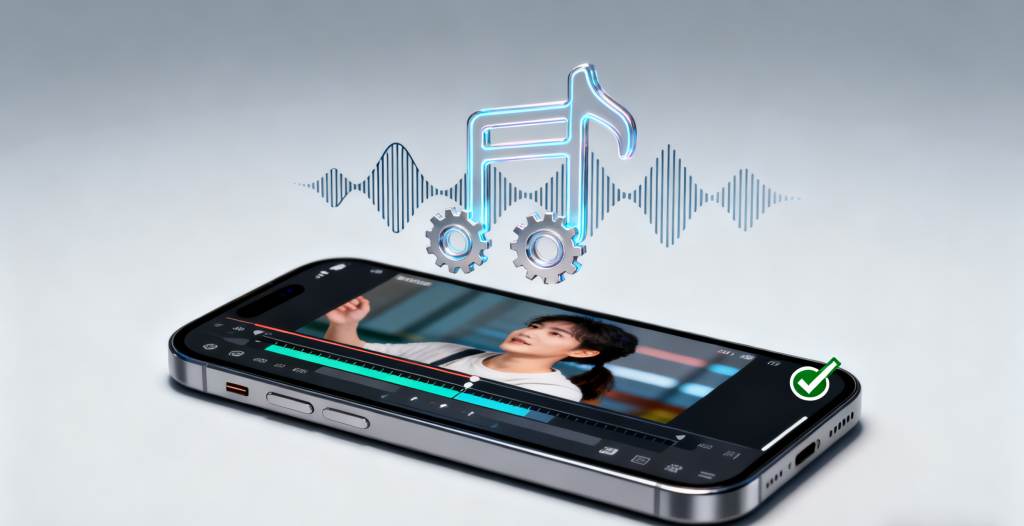
L'utilizzo di musica AI su piattaforme di breve durata richiede attenzione alle politiche audio e alle linee guida della comunità di ciascuna piattaforma. TikTok e Instagram consentono composizioni royalty-free, ma richiedono licenze documentate per l'uso commerciale. Generando brani con diritti commerciali espliciti e caricandoli in una libreria sonora personale, i creatori garantiscono la conformità legale ed evitano le notifiche di rimozione.
Per creare contenuti virali, combinate paesaggi sonori guidati dall'intelligenza artificiale con hashtag di tendenza e tagli sincronizzati. L'audio unico spicca tra le librerie ripetitive della piattaforma, aumentando la condivisibilità e il favore degli algoritmi.
Le migliori pratiche includono:
- Integrazione della biblioteca - Caricare i brani AI con licenza nella propria raccolta sonora privata prima di pubblicarli.
- Note di attribuzione - Aggiungere un riferimento conciso alla licenza nelle didascalie per rafforzare i diritti di utilizzo.
- Allineamento delle tendenze - Adattare i prompt dell'intelligenza artificiale alle tendenze audio attuali, pur mantenendo l'originalità.
Questi passaggi garantiscono che ogni clip rimanga all'interno delle regole della piattaforma e mantenga il potenziale di monetizzazione.
Quali sono le linee guida di TikTok per l'audio generato dall'intelligenza artificiale e il copyright?
I termini di TikTok consentono l'audio fornito dagli utenti a due condizioni: originalità e licenza esclusiva. Le tracce di AI non devono violare i diritti di terzi e devono essere caricate dall'account del creatore. Una volta inseriti in una libreria personale, questi suoni possono essere utilizzati in tutti i video senza obblighi di royalty o rischi di rimozione.
Come usare la musica AI per i filmati di Instagram senza problemi di copyright?
I creatori generano un brano, lo scaricano e lo importano in un editor video prima di pubblicarlo su Instagram. Poiché Reels non dispone di una funzione di caricamento di suoni personalizzati, questa importazione manuale garantisce che l'audio rimanga incorporato nel file video stesso, aggirando le restrizioni della libreria musicale di Instagram e prevenendo le rimozioni automatiche.
Come possono i creatori creare contenuti virali su TikTok e Reels con musica AI royalty-free?
- Prompt ispirati alle tendenze - Utilizzate parole chiave legate a sfide virali nella vostra richiesta di AI per creare colonne sonore fresche e contestualmente rilevanti.
- Composizioni compatibili con il loop - Progettate loop senza soluzione di continuità che si sincronizzano con transizioni rapide e sovrapposizioni di testo.
- Ganci ritmici - Enfatizzate le percussioni o le voci accattivanti che stimolano l'interazione con l'utente e i duetti.
L'integrazione di queste tecniche aiuta i creatori ad elevarsi al di sopra dei brani generici delle biblioteche, portando a tassi di coinvolgimento più elevati e a condivisioni ripetute.
In che modo la piattaforma musicale AI di Mureka supporta la creazione di contenuti sicuri dal punto di vista del copyright?
Mureka offre una serie di funzioni per la creazione di audio sicuro e conforme alle norme:
- Generatore strumentale - Genera fondali multigenere da semplici richieste di testo in pochi secondi.
- Editore online - Consente di eseguire ritagli precisi, stratificazioni e automazione dei volumi senza l'ausilio di strumenti esterni.
- Integrazione vocale - Trasforma i testi digitati o le melodie canticchiate in tracce vocali raffinate grazie alla sintesi guidata dall'intelligenza artificiale.
Combinando queste capacità, Mureka semplifica ogni fase: dall'idea all'audio su licenza pronto per la pubblicazione.
Quali funzioni offre Mureka per la creazione di brani musicali AI personalizzati?
La piattaforma di Mureka consente di caricare i riferimenti stilistici, conversione da testo a canzone, e l'esportazione di brani. I creatori possono impostare il genere, l'atmosfera, il tempo e la strumentazione, quindi visualizzare in anteprima e perfezionare ogni livello. Questo alto livello di personalizzazione garantisce un adattamento perfetto al branding del canale e al ritmo della narrazione.
In che modo Mureka fornisce licenze commerciali complete e certificati di proprietà?
Ogni download da Mureka include un certificato incorporato che documenta i diritti commerciali perpetui e non esclusivi dell'utente. Il certificato è leggibile dalla macchina e dall'uomo, per cui è facile includerlo nei metadati o nelle didascalie dei video e soddisfare qualsiasi audit o revisione della piattaforma.
Come possono i creatori personalizzare la musica dell'IA usando i riferimenti di stile e i suggerimenti su Mureka?
Caricando una breve clip o fornendo un link di YouTube come riferimento stilistico, i creatori guidano l'IA verso l'impronta sonora desiderata. In combinazione con le istruzioni testuali, come “aggiungi arpeggi di chitarra pastosi”, la piattaforma sintetizza un brano su misura che rispecchia gli elementi di riferimento pur rimanendo del tutto originale.
Quali sono le considerazioni legali e le tendenze emergenti in materia di copyright musicale per l'AI nel 2025?
La legge sul diritto d'autore per le opere generate dall'IA è tuttora oggetto di discussione attiva, in quanto i legislatori definiscono la paternità e la proprietà. In molte giurisdizioni, le composizioni puramente create dall'IA non godono del diritto d'autore tradizionale, a meno che non sia documentata una sostanziale creatività umana. Questo panorama in evoluzione sottolinea l'importanza di licenze commerciali e certificati di proprietà chiari.
Nel frattempo, le tendenze emergenti puntano a modelli ibridi in cui l'IA suggerisce idee e gli esseri umani finalizzano le composizioni per garantire una posizione legale più forte. Anche la trasparenza dei dati di addestramento dell'IA sta diventando un punto focale, con la richiesta alle piattaforme di IA di divulgare il materiale di partenza e la provenienza del modello.
| Tendenza | Implicazioni | Linea temporale |
|---|---|---|
| Collaborazione tra uomo e IA | Rivendicazioni di paternità più forti grazie alle modifiche umane | Dal 2025 in poi |
| Trasparenza dei dati di formazione | Divulgazione delle fonti dei campioni per chiarezza giuridica | Metà del 2025 |
| Politiche di IA a livello di piattaforma | Assistenti musicali AI integrati sulle piattaforme sociali | Tardivo-2025 |
Implicazioni legali ed etiche dell'AI Music in Europa e Svezia
Le implicazioni legali ed etiche dell'intelligenza artificiale in Europa: Sfide per la legge sulla proprietà intellettuale e la regolamentazione dell'industria musicale in Svezia 2024
Questa tesi indaga le questioni etiche e legali che circondano la musica generata dall'intelligenza artificiale, esplorando il modo in cui si inserisce negli attuali quadri giuridici e le sue implicazioni più ampie per la legge sul diritto d'autore nel settore musicale.
Le implicazioni legali ed etiche dell'intelligenza artificiale in Europa: Sfide per la legge sulla proprietà intellettuale e la regolamentazione dell'industria musicale in Svezia 2024, 2024
Come si sta evolvendo la legge sul diritto d'autore per la musica generata dall'intelligenza artificiale?
I legislatori stanno discutendo se le composizioni di sola intelligenza artificiale possano essere protette da copyright o se richiedano la paternità umana per essere considerate tali. Le sentenze in sospeso potrebbero imporre ai creatori di dimostrare di aver apportato un contributo sostanziale, come la modifica di un testo o di un arrangiamento, per poter rivendicare tutti i diritti.
Quali sono le preoccupazioni etiche e i problemi di trasparenza nella creazione di musica tramite intelligenza artificiale?
Le sfide etiche riguardano l'uso non accreditato di campioni protetti da copyright nell'addestramento dell'IA e la mancanza di chiarezza sulla provenienza dei dati. Le comunità creative chiedono la piena divulgazione dei dataset di addestramento e delle architetture dei modelli per garantire che le opere guidate dall'IA rispettino i contributi degli autori originali.
In che modo l'AI Music influenzerà la creazione di contenuti sulle piattaforme dei social media in futuro?
La musica AI è pronta a diventare uno strumento integrante delle suite per la creazione di contenuti, con funzioni imminenti come il jamming collaborativo in tempo reale e le colonne sonore adattive che rispondono alle reazioni degli spettatori in diretta. Queste innovazioni aumenteranno il coinvolgimento e ridurranno le barriere produttive per i creatori su tutte le piattaforme.
In che modo i creatori possono massimizzare la monetizzazione ed evitare i rischi legati al copyright utilizzando l'AI Music?
I creatori spesso inciampano nell'uso di campioni di tendenza o di tracce stock etichettate in modo errato che contengono ancora diritti nascosti. Per evitare questi errori, iniziate sempre con una licenza commerciale AI garantita e inserite i metadati della licenza in ogni upload.
La musica AI royalty-free può aumentare le entrate pubblicitarie su YouTube, sbloccare i fondi dei creatori su TikTok e rafforzare le partnership con i marchi fornendo identità audio uniche. Le strategie di monetizzazione includono brani esclusivi per i clienti, temi audio brandizzati per gli sponsor e fondali in loop senza soluzione di continuità che mantengono l'attenzione degli spettatori attraverso gli annunci.
Quali sono gli errori più comuni in materia di copyright da evitare quando si utilizza la musica artificiale?
- Supponendo che “royalty-free” significhi “senza licenza”.”
- Caricare tracce AI senza licenza da fonti non verificate.
- Mancata inclusione dei dettagli della licenza nelle descrizioni dei video.
Evitando queste insidie, i creatori mantengono canali liberi da scioperi e preservano i flussi di monetizzazione.
Come sfruttare la musica AI royalty-free per le entrate pubblicitarie di YouTube e la monetizzazione di TikTok?
Allineare i temi musicali dell'IA ai dati demografici del pubblico e alle categorie di annunci. Ad esempio, un brano elettronico energico può aumentare il coinvolgimento nei vlog di fitness, aumentando l'interesse degli inserzionisti. Su TikTok, i ganci sonori personalizzati possono far aumentare i tassi di riproduzione, sbloccando i pagamenti programmatici legati alle metriche di utilizzo.
Che ruolo ha Mureka nel garantire la conformità al copyright per i creatori?
Mureka incorpora certificati di licenza leggibili dalla macchina direttamente in ogni file audio e fornisce chiare linee guida per l'utilizzo. Questo duplice approccio garantisce che sia le scansioni automatiche sia i revisori umani riconoscano i diritti commerciali del creatore, eliminando l'incertezza e mantenendo i ricavi ininterrotti.
Quali sono le domande più frequenti sul copyright della musica AI e sull'utilizzo sui social media?
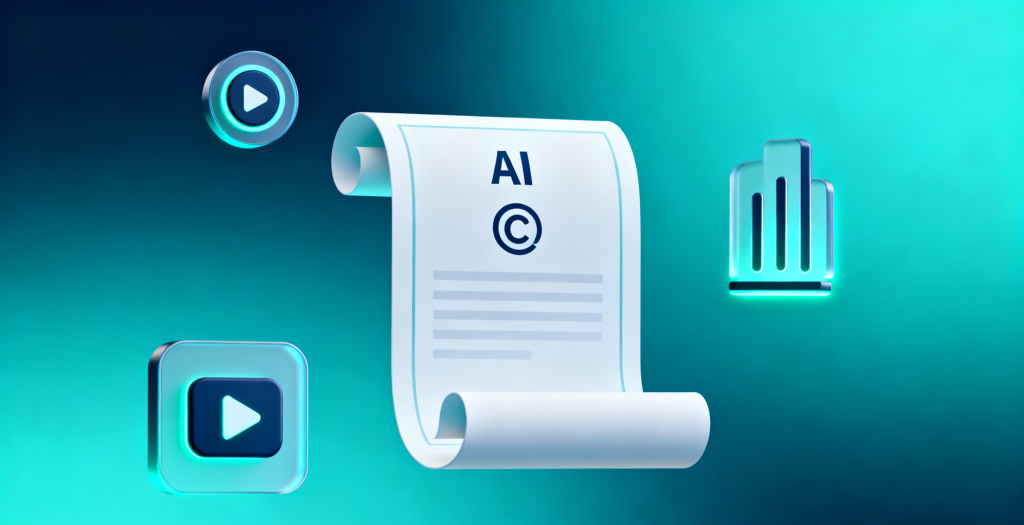
I creatori spesso si chiedono se hanno bisogno di un'autorizzazione supplementare oltre alla licenza AI o se le politiche delle piattaforme trattano in modo diverso i suoni prodotti dall'AI. La comprensione di queste sfumature aiuta a evitare la rimozione dei contenuti e la perdita di profitti.
La musica generata dall'intelligenza artificiale è priva di copyright per impostazione predefinita?
No, le composizioni di AI richiedono una licenza commerciale esplicita per essere considerate royalty-free. Senza termini di licenza, le piattaforme possono segnalare i brani come privi di diritti d'uso. Una licenza documentata garantisce la piena autorizzazione per qualsiasi caso d'uso.
È possibile monetizzare la musica AI su YouTube, TikTok e Reels?
Sì, una volta in possesso di una licenza commerciale valida e incorporando i dettagli di utilizzo nei metadati dei contenuti, è possibile monetizzare la musica generata dall'IA sulle principali piattaforme senza restrizioni o condivisione dei ricavi con i titolari dei diritti.
Quali generatori di musica AI offrono licenze commerciali e royalty-free?
Piattaforme AI che garantiscono produzioni originali e forniscono licenze commerciali chiare e perpetue sono le uniche opzioni sicure. Questi servizi assicurano che non ci siano rivendicazioni nascoste di campioni o royalties future, consentendo ai creatori di concentrarsi sulla narrazione invece che sul rischio legale.
Come posso utilizzare la musica AI senza violare le politiche di copyright della piattaforma?
Generate un brano con licenza documentata, includete il certificato di licenza nella descrizione o nei metadati e caricate l'audio come libreria sonora privata o file video incorporato. Questo processo è conforme alle linee guida di tutte le principali piattaforme e previene i takedown automatici.
I creatori che seguono queste linee guida mantengono canali privi di scioperi e si assicurano ogni flusso di entrate attraverso una corretta licenza musicale AI.
Combinando strategie specifiche per le piattaforme, approfondimenti legali e gli strumenti completi di Mureka per la musica AI, i creatori possono produrre, distribuire e monetizzare con sicurezza colonne sonore originali senza mai violare il copyright. Adottando composizioni AI royalty-free e incorporando una chiara documentazione di licenza, il percorso di crescita ininterrotta su YouTube, TikTok e Reels diventa semplice e sostenibile.

